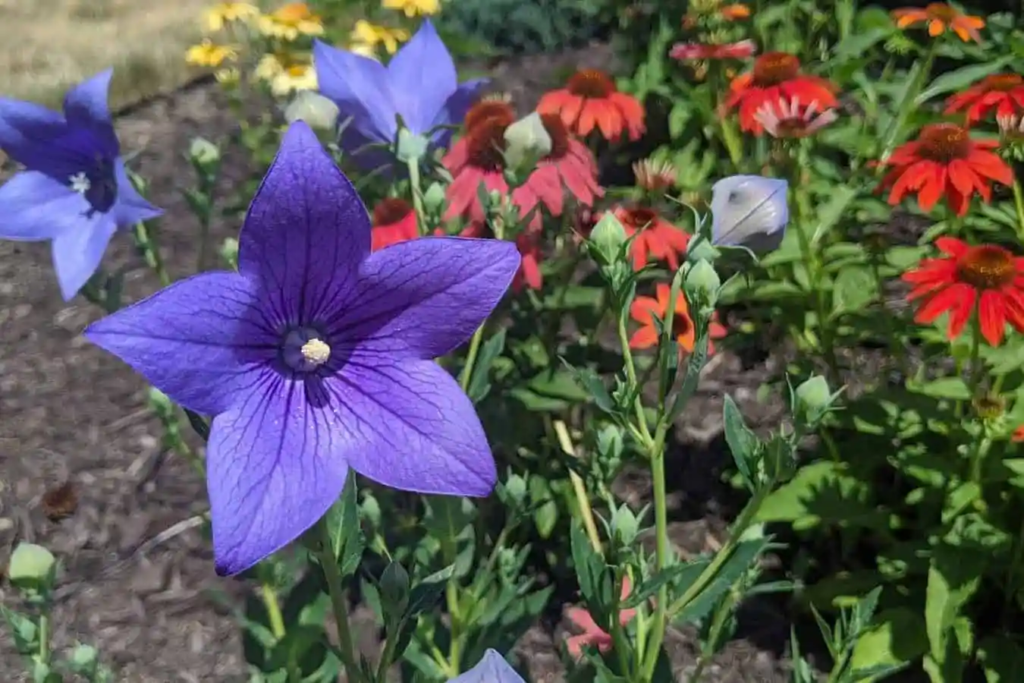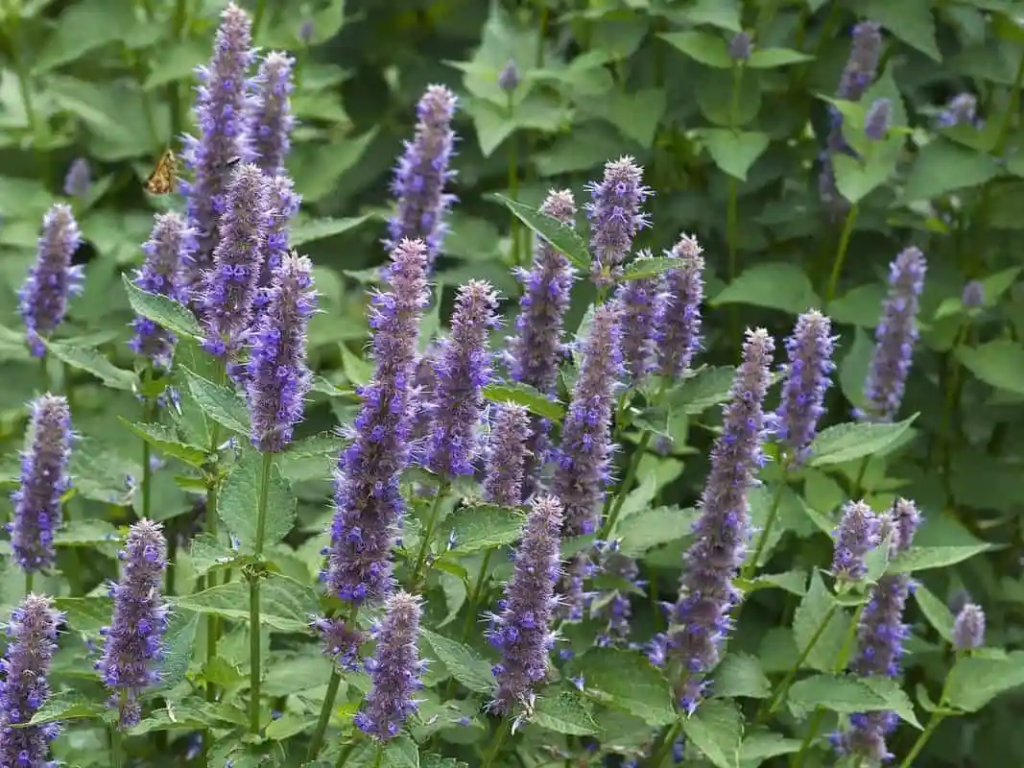
It can be tempting for gardeners to clean up their gardens in the fall. However, some perennials do best when neglected until spring. You’ll find 18 perennials in this guide that you shouldn’t trim in the fall. You’ll discover the benefits of leaving these plants alone as well as seasonal garden maintenance.
Let’s get right to the perennials that you shouldn’t remove during your autumnal cleanup:
Coneflowers (Echinacea)

Coneflowers, or Echinacea, are beloved in gardens for their bright, daisy-like blooms and extended flowering period. To maintain their visual appeal and ecological benefits through winter, it’s best to leave the spent flower heads in place. They offer seeds for birds and add structural interest to the winter landscape.
When early spring arrives, it’s time to cut back the old stems. Trim them down to ground level just as new growth begins to emerge. This not only protects the plant’s crown over winter but also ensures a strong start for the new growing season.
Black-eyed Susans

Black-eyed Susans (Rudbeckia hirta) continue to provide interest and function throughout winter. Their seed heads feed birds, and the dried stems contribute a rustic charm to garden beds.
Wait until early spring to cut them back. By then, the seeds will have served their purpose, and you can remove the old stems to allow new growth. Use sharp pruners to cut down the stems to a few inches above the ground, ensuring you don’t damage the emerging shoots.
Joe Pye Weed

Joe Pye Weed stands out with its tall stature and mauve flowers, attracting butterflies and bees. In fall, the seed heads offer winter interest and nourishment for birds.
In early spring, trim the old stems to about 6 inches above the ground to support fresh growth. Use clean, sharp tools to avoid spreading diseases and ensure a clean cut, which helps maintain the plant’s health and structure.
Anise Hyssop

Anise Hyssop (Agastache foeniculum) is known for its fragrant foliage and seed-rich flower heads that attract finches. Its structure also adds a vertical element to the winter garden.
In early spring, once the coldest weather has passed, trim the stems down to the base. This encourages vigorous new growth and prepares the plant for a thriving summer.
Oakleaf Hydrangeas

Oakleaf Hydrangeas are valued for their stunning fall foliage and dried flower heads that provide winter interest and shelter for insects.
Prune these hydrangeas in spring to preserve their natural shape and health. Focus on removing old wood and any crossing or rubbing branches to enhance air circulation and light penetration, promoting overall plant vitality.
Bee Balm

Bee Balm is favored by pollinators and its seed heads provide a food source for birds in winter. Leaving the stems and flower heads intact helps protect the plant’s crown from winter damage.
In early spring, cut back the stems to about 6 inches above the ground. This encourages new growth and can help manage overcrowding and prevent powdery mildew by thinning the plant every few years.
Feather Reed Grass

Feather Reed Grass adds elegant movement and texture to your garden throughout the year. In winter, its golden plumes catch the light and offer visual interest.
In late winter or early spring, before new growth begins, cut back the grass to about 6 inches above ground. This clean-up allows new shoots to emerge unobstructed and maintains a tidy appearance. Sharp hedge shears can simplify this task.
Hardy Geraniums

Hardy Geraniums (cranesbill) are known for their persistent foliage and flowers into fall. By not cutting them back, you help the plant use its foliage for added winter resilience.
In early spring, trim back the old foliage to make space for new growth. This will rejuvenate the plant and promote vigorous blooming. Remove any dead or diseased leaves throughout the growing season to keep the plant healthy.
Red-hot Poker

Red-hot Poker plants, with their distinctive flower spikes, provide architectural interest in winter and their foliage helps protect the plant’s base from frost.
In early spring, prune back the old flower spikes and any damaged or dead foliage. Wait until you see new growth before cutting back to avoid exposing the plant to late frosts.
Balloon Flower

Balloon Flowers are known for their unique, balloon-like buds that open into star-shaped blooms. The spent flowers and stems offer winter interest and protection for the plant’s base.
In early spring, cut back the stems to just above the new growth. This helps maintain a compact shape and directs the plant’s energy towards producing new blooms. Be patient as Balloon Flowers are slow to emerge in spring.
Heuchera (Coral Bells)

Heucheras, or Coral Bells, are appreciated for their colorful foliage. Keeping the leaves intact through winter provides natural insulation, helping the plant survive cold temperatures.
In early spring, remove any dead or damaged leaves and trim the stems just above new growth. Regularly dividing the plants every few years helps maintain their vigor and prevent overcrowding.
Sedum (Stonecrop)

Sedum varieties like ‘Autumn Joy’ should be left standing throughout winter. Their dried flower heads offer texture and the plant’s succulent nature helps it endure cold months.
In early spring, cut back the old stems to ground level. This promotes fresh growth and keeps the plant looking tidy. Sedums are drought-tolerant and thrive in well-drained soil, making them low-maintenance.
Milkweed (Asclepias)

Milkweed, or Butterfly Weed, is essential for monarch butterflies as it provides habitat and food. Leaving the stalks and seed pods ensures these pollinators have the resources they need through winter.
In early spring, after frost danger has passed, cut back the old stems to about 6 inches above the ground. This encourages new growth and prepares the plant to support the next generation of monarchs. Wear gloves when handling milkweed, as its sap can be irritating.
Hellebores (Lenten Rose)

Hellebores are among the first perennials to bloom in late winter or early spring. Their evergreen foliage and early flowers add vital color and interest during bleak months.
In early spring, remove any old or damaged leaves to make room for new growth and flowers. This simple maintenance helps the plant stay healthy and enhances its appearance. Hellebores thrive in shaded areas with well-drained soil.
Ornamental Grasses

Ornamental grasses, such as Miscanthus and Panicum, provide stunning winter visuals with their tall plumes. They also offer shelter for wildlife and help prevent soil erosion.
In late winter to early spring, cut back the grasses to about 6 inches above the ground. This encourages new growth and keeps the plants looking neat. Sharp hedge shears or a scythe can simplify the task, especially for larger clumps.
Ferns

Ferns, particularly evergreen varieties, are popular perennials that should not be cut back in fall. Their fronds offer winter interest and protect the roots from freezing temperatures.
Early spring is the best time to remove any old or damaged fronds. This will make space for new growth and keep the ferns healthy. Ferns prefer shaded, moist environments, and regular mulching helps retain soil moisture and suppress weeds.
False Indigo (Baptisia)

False Indigo produces attractive seed pods that add winter interest to the garden. Its robust stems also support snow, reducing stress on neighboring plants.
In early spring, cut back the old stems to about 6 inches above the ground to encourage new growth. False Indigo thrives in well-drained soil and full sun, making it a low-maintenance addition to perennial borders.
Russian Sage

Russian Sage is valued for its beauty and structure throughout the year. In fall, its stems contribute visual interest and protect the plant’s crown from winter damage.
In early spring, cut back the stems to about 6 inches above the ground to stimulate fresh growth. Regular spring pruning helps ensure a bushy plant with abundant blooms throughout the growing season. Russian Sage prefers well-drained soil and full sun, making it a drought-tolerant, low-maintenance choice.

